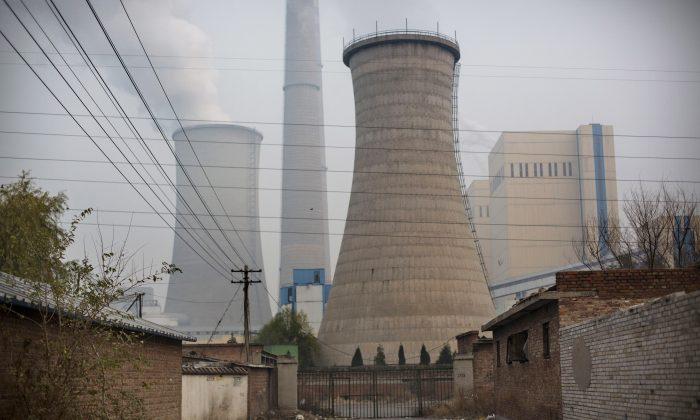News Analysis
China is planning to build another 300 coal-fired power plants that will produce the equivalent of all the coal-fired power plants in the 28-nation European Union.
Despite signing climate-change treaties to reduce CO2 emissions, including the United Nations-sponsored 2009 Copenhagen Accords and the 2015 Paris Agreements, China’s coal-fired power capacity quintupled from 195 gigawatts in 2000 to 973 gigawatts in 2018.
While China relentlessly increased its coal-fired power generation, 1,756 gigawatts of planned coal-fired power capacity was canceled between 2010 and 2018, according to Global Energy Monitor. Already accounting for almost half of the world’s 2,024 gigawatts of coal-fired capacity, the Financial Times reported that China will add another 148 gigawatts of domestic coal-fired power, about the same as the European Union’s 149 gigawatts of existing coal-fired capacity.
China did make “significant declines” in air pollution in the five years from 2013 to 2017 by reducing PM2.5 fine particle pollution levels by about one third, according to a study published by the U.S. journal Proceeding of the National Academy of Sciences (PNAS). But given that Beijing’s PM2.5 concentration in 2013 was 40 times higher than the recommended standards of the World Health Organization (WHO), cutting levels by a third means that Beijing’s PM2.5 concentrations are still 27 times higher than the recommended WHO standards.
The study credits China with implementing new standards for thermal power plants and industrial boilers, the replacement of old factories, and new emissions rules for vehicles. PNAS praised China’s big increases in renewable energy capacity, but made no mention of China’s coal-fired capacity rising by 28 percent during the same period.
The main reason for China’s staggering energy consumption growth is the communist leadership directing state-owned power companies to maximize manufacturing export growth by subsidizing industrial customer electrical prices. But facing trade retaliation threats from developed nations suffering from job losses, China was forced in 2017 to move to market-driven pricing by 2020, according to Enodo Economics.
Environmentalists assumed that with renewable energy’s average revenue per unit of electricity generated falling to a modest premium over the cost of coal, China would dramatically increase its industrial-scale deployment of solar and wind farms.
But the Institute for Energy Research reports that the intermittent nature of wind and solar power production and inability to generate peak power during peak consumption demand “imposed” added costs on utilities to constantly keep stand-by fossil-fuel power capacity available. The study found that, “on average, new wind and solar plants cost about 65 percent more than existing coal-fired power plants before applying the imposed costs to wind and solar, and twice as much when the imposed costs are applied.”
Chinese leader Xi Jinping told 40 nations at the Beijing “Belt and Road Forum” in April that China is committed to “open, clean, and green development.” He also said that China’s overseas ventures included more than 300 coal plants, in places such as Turkey, Vietnam, Indonesia, Bangladesh, Egypt, and the Philippines.
Due to China’s internal and external expansions, coal currently generates a near-decades high of 40 percent of the world’s electricity, according to the World Bank. There now are 78 countries using coal to generate power, up from 66 in 2000, with another 16 in construction or planning to build coal-fired power plants.





